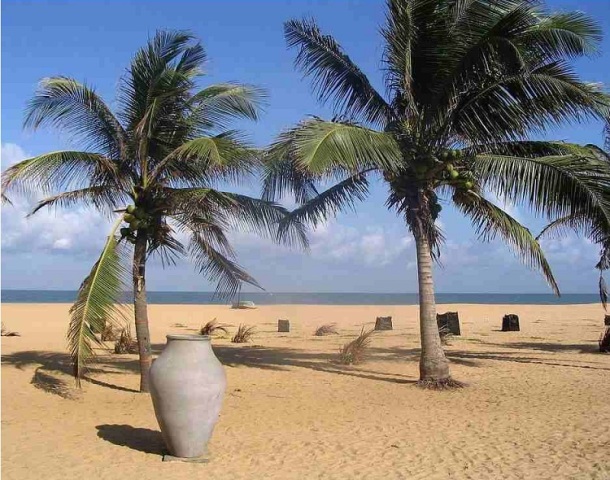Sri Lanka is an island-nation off the shores of India, popularly known as ‘the Pearl of the Indian Ocean’. With this article, know some fun and interesting facts about Sri Lanka.
Facts About Sri Lanka
One of the most beautiful dots in the map of the world, Sri Lanka is known to be a very popular destination for tourists, surrounded on all four sides by water and shaped in the form of a tear-drop. Sri Lanka is an island-nation situated in the Indian Ocean, off the south-eastern coast shores of India. Spread over an area of approximately 65,525 sq. km, the country forms a strategic naval link between West Asia and South East Asia. Sri Lanka is a multi-religious and multi-ethnic nation, where almost 70 percent of the population follows Buddhism. After gaining independence in 1948, the nation has progressed to quite an extent. Today, it boasts of being a modern industrial economy that has one of the highest per capita incomes in South Asia. Apart from that, it is also a famous tourist destination, mainly owing to its natural splendor, in the form of tropical forests, picturesque beaches and mesmerizing scenery. To know more about the island-nation, explore the following lines.

Image: By S B from Sydney, Australia (Negombo Beach, Sri Lanka Uploaded by Ekabhishek) [CC-BY-2.0 (http://creativecommons.org/licenses/by/2.0)], via Wikimedia Commons
Fast Facts
Continent: Asia
Area: 65,610 km2
Capital: Colombo
Population: 20,277,597 (2012)
Currency: Sri Lankan Rupee
Official Languages: Sinhala, Tamil
Independence Day: February 4, 1948
Type Of Government: Unitary, Presidential, Democratic Socialist, Republic
Fun & Interesting Facts About Sri Lanka
- The official name of Sri Lanka is ‘The Democratic Socialist Republic of Sri Lanka’.
- Sri Lanka is often known as the ‘Pearl of the Indian Ocean’.
- The official languages of Sri Lanka are Sinhala and Tamil. However, English is widely spoken in the country.
- Sri Lanka gained independence from the United Kingdom in 1948 and became a republic in 1972.
- One of the first references of this country is mentioned in the Hindu epic, ‘Ramayana’. Sri Lanka was believed to be the kingdom of ‘Raavana’ and was initially known as ‘Lanka’.
- Sri Lanka has a Democratic Government, with an Executive President and a Parliament elected by the people.
- The currency of Sri Lanka is the Sri Lankan Rupee, with one rupee being divided into one hundred cents.
- Majority of the population in Sri Lanka follows Buddhism, followed by Hinduism, Christianity and Islam.
- The ‘Na Tree’, botanically known as ‘Mesua Nagassarium’ is the National Tree of Sri Lanka.
- The National Flower of Sri Lanka is ‘Nil Mahanel’, botanically known as ‘Nympheae Stellata’.
- UNDP and UNICEF rate Sri Lanka as one of the best among developing countries, on the Human Development Index.
- There are eleven universities in Sri Lanka.
- Sri Lanka was known as Ceylon before 1972.
- The highest point in Sri Lanka is Pidurutalagala (2,524 m).
- Buddhism arrived in Sri Lanka in 3rd century BC.
- Sri Lanka finds a mention in the great Indian epic Ramayana, which was, written around 500 BC.
- Sri Lanka is also known as ‘The Nation of Smiling People’.
- Initially, Sri Lanka comprised of Veddha people. Sinhalese and Tamils migrated to the country, from India, between 500 and 300 BC.
- Tea was introduced to the Sri Lanka in 1867, while rubber was brought here in 1876.
- Mrs. Sirimavo Bandaranaike of Ceylon (Sri Lanka) became the first female Prime Minister of the world in 1960.
- Sri Lanka has an elephant orphanage and every year, it serves as the venue of an elephant pageant.
- Coconut is a very important ingredient used in Sri Lankan cooking.
- Sri Lanka is the first country in the world to have a woman as a democratically elected head of state.
- The spice cinnamon originated in Sri Lanka and was discovered by the Egyptians.
- Sri Lanka is amongst the leading exporters of tea in the world.
- The national flag of Sri Lanka, the Lion Flag, is considered to be one of the oldest flags in the world.
- The largest city in Sri Lanka is Colombo.
- The average life expectancy for both males and females in Sri Lanka is 73-75 years.
- Sri Lanka is believed to be one of the most literate countries in the world, with an average of 91%.
- The country is home to a large and diverse biodiversity.
- The Sri Lankan flag is the only one in the world to recognise different religious groups. The yellow border and pipul leaves symbolise Buddhism; while the green and saffron bands represent Muslim and Hindu communities.
- In most of the countries, nodding your head up and down means yes and moving it back and forth means no. It is the complete opposite in Sri Lanka.
- The most common meal in Sri Lanka is a spicy curry served with rice and a small side dish of vegetables.
- The town of Ratnapura is famous as the gem capital of Sri Lanka.
See also
More from iloveindia.com
- Home Remedies | Ayurveda | Vastu | Yoga | Feng Shui | Tattoos | Fitness | Garden | Nutrition | Parenting | Bikes | Cars | Baby Care | Indian Weddings | Festivals | Party ideas | Horoscope 2015 | Pets | Finance | Figures of Speech | Hotels in India : Delhi | Hyderabad | Chennai | Mumbai | Kolkata | Bangalore | Ahmedabad | Jaipur
- Contact Us Careers Disclaimer Privacy Policy Advertise With Us Lifestyle Sitemap Copyright iloveindia.com. All Rights Reserved.







